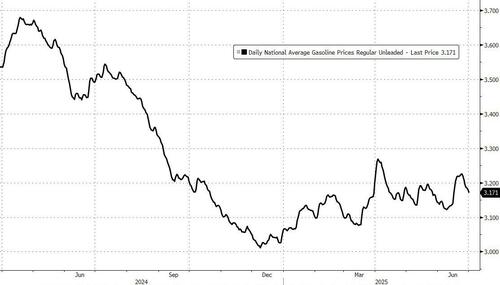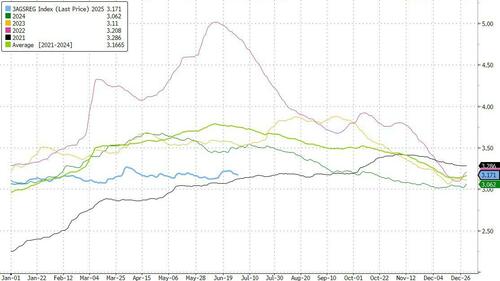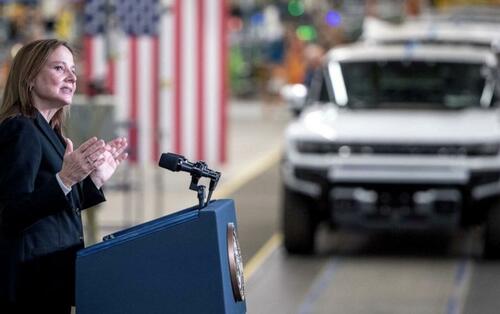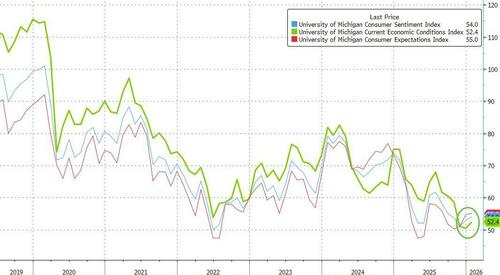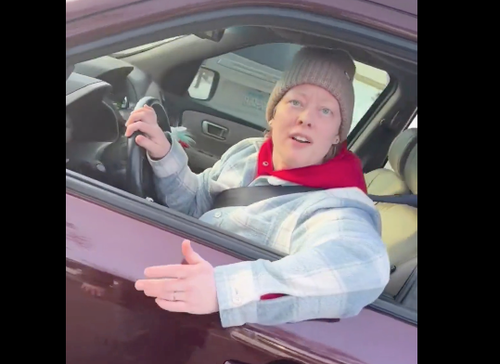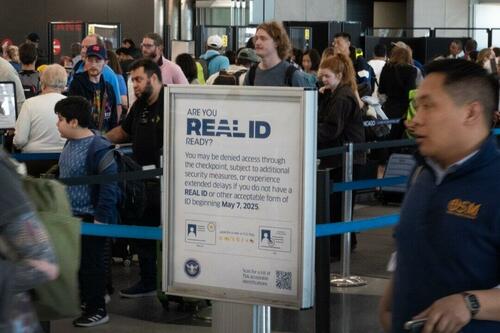
July 4th Gas Prices Lowest In 4 Years
Authored by Wesley Brown via The Epoch Times,
Nearly 72 million people are expected to travel during the Fourth of July holiday, likely leading to crowded highway traffic and congested airports across the United States. However, holiday travelers should also see lower gas prices and airfares as they go to their Independence Day destinations, experts say.
Nationally, AAA Travel, the travel‐services arm of the American Automobile Association, forecasts that 72.2 million people will travel at least 50 miles from home during the Independence Day holiday period from June 28 to July 6. This year’s domestic travel projection is 1.7 million more travelers than last year and 7 million more than in 2019.
“Summertime is one of the busiest travel seasons of the year, and July 4th is one of the most popular times to get away,” Stacey Barber, vice president of AAA Travel, said.
“Following Memorial Day’s record forecast, AAA is seeing strong demand for road trips and air travel over Independence Day week. With the holiday falling on a Friday, travelers have the option of making it a long weekend or taking the entire week to make memories with family and friends.”
AAA’s annual Independence Day forecast now includes two weekends instead of one, better reflecting the flow of holiday travelers, officials said. However, the U.S. Transportation Security Administration’s travel projections for the airline industry run from July 1 through July 7, with the highest passenger volume—about 2.9 million—expected on July 6.
According to Transportation Security Administration (TSA) officials, airports across the United States expect the highest passenger numbers ever for the nation’s 249th birthday. TSA staff at airports nationwide said they are prepared to screen more than 18.5 million travelers at the country’s security checkpoints.
Already on June 22, the TSA reported that it screened nearly 3.1 million travelers, the busiest single day number in the agency’s history, and more than 40 days after REAL ID enforcement came into full force at airport checkpoints nationwide on May 7.
“TSA continues to work closely with our industry partners and ensure our airport security checkpoints are fully staffed and prepared to handle the heavy rush of traffic,” TSA acting Administrator Ha Nguyen McNeill said in a statement provided to The Epoch Times.
“We are deploying technologies and procedures to improve security and enhance the passenger experience, including for families. We ask travelers to pack their patience, especially during peak travel days, as we work to provide maximum hospitality to our customers,” McNeil said, noting that nearly 94 percent of passengers are presenting a REAL ID or another acceptable form of ID to travel domestically in the United States.
Ahead of the holiday travel season, the Federal Aviation Administration (FAA) is predicting the busiest Fourth of July week in 15 years, with July 3 expected to see more than 51,000 domestic and international flights. Airlines for America (A4A) is also forecasting another record-breaking summer travel season, projecting that the nation’s top airlines will carry 272 million passengers from June 1 through August 31.
To accommodate this demand, A4A spokeswoman Amanda Maile told The Epoch Times that U.S. airlines are operating 27,000 flights daily—up by 4 percent from last year.
“Premium and international demand this summer are expected to remain strong, with the top foreign destinations for U.S. airlines projected to be Mexico, Canada, Dominican Republic, United Kingdom and Italy,” she said.
Meanwhile, U.S. motorists on the busy highways will notice slightly higher gas prices compared to a month ago, but still significantly lower than the Fourth of July travel period in 2024, according to AAA’s weekly gas price report.
As of this week, the national average for a gallon of regular gasoline is $3.22, five cents more than a month ago before crude oil prices started rising again after U.S. airstrikes targeted Iran nuclear facilities.
However, pump prices remain 27 cents cheaper than this time last year and the lowest for the July 4th weekend since 2021…
The nation’s 10 most expensive gasoline markets are California ($4.62), Hawaii ($4.47), Washington ($4.45), Oregon ($4.06), Nevada ($3.81), Alaska ($3.74), Illinois ($3.49), Idaho ($3.43), Pennsylvania ($3.39), and Utah ($3.37).
The 10 least expensive markets are Mississippi ($2.73), Oklahoma ($2.81), Texas ($2.82), Tennessee ($2.82), Louisiana ($2.82), Arkansas ($2.83), Alabama ($2.84), Missouri ($2.85), South Carolina ($2.91), and Kansas ($2.91).
For electric vehicle drivers, the national average price per kilowatt-hour of electricity at a public EV charging station remained steady this past week at 36 cents, according to AAA data.
The top 10 most expensive states for EV charging rates per hour are West Virginia (51 cents), Alaska (51 cents), Tennessee (47 cents), Montana (46 cents), Hawaii (45 cents), North Dakota (42 cents), New Hampshire (42 cents), Kentucky (42 cents), South Carolina (42 cents), and Louisiana (42 cents).
The nation’s top 10 least expensive states for EV rates during the holiday are Kansas (26 cents), Missouri (27 cents), Maryland (27 cents), Nebraska (30 cents), Delaware (30 cents), Utah (30 cents), Iowa (32 cents), Washington, D.C. (32 cents), Colorado (33 cents), and North Carolina (33 cents).
Tyler Durden
Wed, 07/02/2025 – 11:25

ZeroHedge News
[crypto-donation-box type=”tabular” show-coin=”all”]
